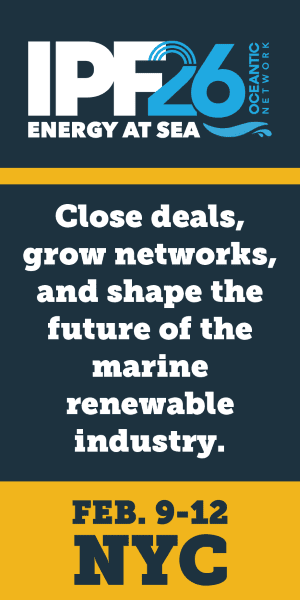As the energy sector faces mounting pressure to cut emissions and boost efficiency, an energy expert and strategist shares how targeted operational and digital transformations can make traditional assets more competitive and sustainable
The energy transition is often framed around wind, solar, and storage. But in late 2024, the U.S. EPA added new urgency for oil and gas with its “Waste Emissions Charge” — a methane fee starting at $900 per tonne in 2024 and rising to $1,500 by 2026 for major emitters. Faced with these costs, many operators are rethinking how to modernize existing assets to cut emissions and stay competitive — making Kirill Nagorskiy’s approach more relevant than ever. With experience ranging from hands-on offshore production operations to advising global energy firms, he has helped companies rethink how they operate — often under pressure to modernize fast. For example, his novel approach to deploying polymer injection from a deepwater vessel was an oil and gas industry first. His work spans deepwater recovery methods, digital capability building, and AI readiness — all aimed at making traditional energy operations more efficient, adaptive, and fit for the future.
Getting More From What We Have
In the oil industry, recovery rates can make or break a field’s economics — and its environmental footprint. Traditional extraction methods often leave vast reserves untapped, not for lack of effort, but for lack of ingenuity in how to reach them.
One such ingenuity-driven solution came at BP, where engineers explored how polymer flooding — typically used in onshore fields — could be adapted for deepwater offshore production. The method involves injecting water thickened with polymers to push more oil toward the wellbore by improving viscosity and flow control. This project was on a deepwater shelf, and polymer flooding had never been done from a floating vessel.
To make it work, the team had to rethink the modeling approach from the ground up. Kirill Nagorskiy, who led the multidisciplinary modeling effort, developed a tailored methodology that accounted for subsurface behavior, chemical performance, and operational constraints on the vessel. The result was both technically feasible and a commercial success. The project’s internal rate of return doubled after the new approach was implemented.
“When a method isn’t designed for your conditions, that’s often where the most interesting breakthroughs begin,” says Kirill. “The goal wasn’t to experiment — it was to make the unconventional work within strict operational realities.”
It’s an example that some of the most effective efficiency gains come from within — by upgrading how existing assets are used. In the context of the energy transition, that kind of targeted engineering offers one of the fastest ways to lower the footprint of hydrocarbon production without new wells or expensive exploration.
How Traditional Energy Goes Digital
Modernizing legacy systems has become a central challenge for oil and gas companies navigating the energy transition. Outdated infrastructure and siloed processes often make it hard to adapt — and agility is no longer optional.
Some firms are responding by building digital capabilities from the ground up. At one European energy company, Kirill Nagorskiy led a transformation effort to do just that. With no digital framework in place, the goal was to design a function that could scale and embed new ways of working across the organization.
The team identified 11 digital focus areas — from predictive maintenance to emissions tracking — and developed the structure to support them. That meant recruiting the right talent, aligning incentives, and integrating digital processes into day-to-day operations. “A lot of digital projects fail because they focus only on tools,” Kirill notes. “But if you want long-term impact, you have to build the muscle — not just hand out the equipment.”
In this case, that long-term impact went beyond the projected $5–15 million boost in EBITDA. It marked a shift in how the company operated, showing that real transformation comes from tailored solutions, not off-the-shelf blueprints.
Making GenAI Work in Oilfield
Artificial intelligence has long supported oil and gas operations — from predictive maintenance to reservoir modeling. But the rise of generative AI has raised new questions: not just what’s possible, but how to apply it meaningfully in a high-risk, asset-heavy industry.
To explore this, Kirill Nagorskiy led a global research initiative focused on GenAI readiness in oilfield operations. His team surveyed and interviewed CEOs and CTOs across major firms, mapping where the technology could create real value — and where internal systems and skills still posed barriers.
Rather than produce a high-level vision, the outcome was a grounded strategy: where to start, how to scale, and which pitfalls to avoid. It also included case-based recommendations for aligning GenAI efforts with internal capabilities — from data systems and engineering workflows to talent development.
“Every company wants to move fast with AI,” says Kirill, “but the real question is: where do you have the conditions to succeed today — and where do you need to build them first?”
In a sector where trial and error is costly, that kind of clarity matters. As oil and gas companies shift toward more automated and software-enabled operations, knowing how — and where — to apply GenAI effectively could shape the next wave of performance gains.
The CEO of U.S. Energy Media, Emmanuel Sullivan is a technical writer who has built up his profile in the oil and gas industry. He lives and works in Houston, where he publishes Oilman and Oilwoman on a bimonthly basis, and Energies quarterly, distributing the magazine to energy thought leaders and professionals throughout the United States and around the world. At a time when technology is rapidly changing, he provides an invaluable service to oil & gas, and renewable energy executives, engineers, and managers, offering them both broad and specific looks at the topics that affect their livelihoods. Sullivan earned his BA in Communications at Thomas Edison State University and his MA in Professional Writing at Chatham University.






